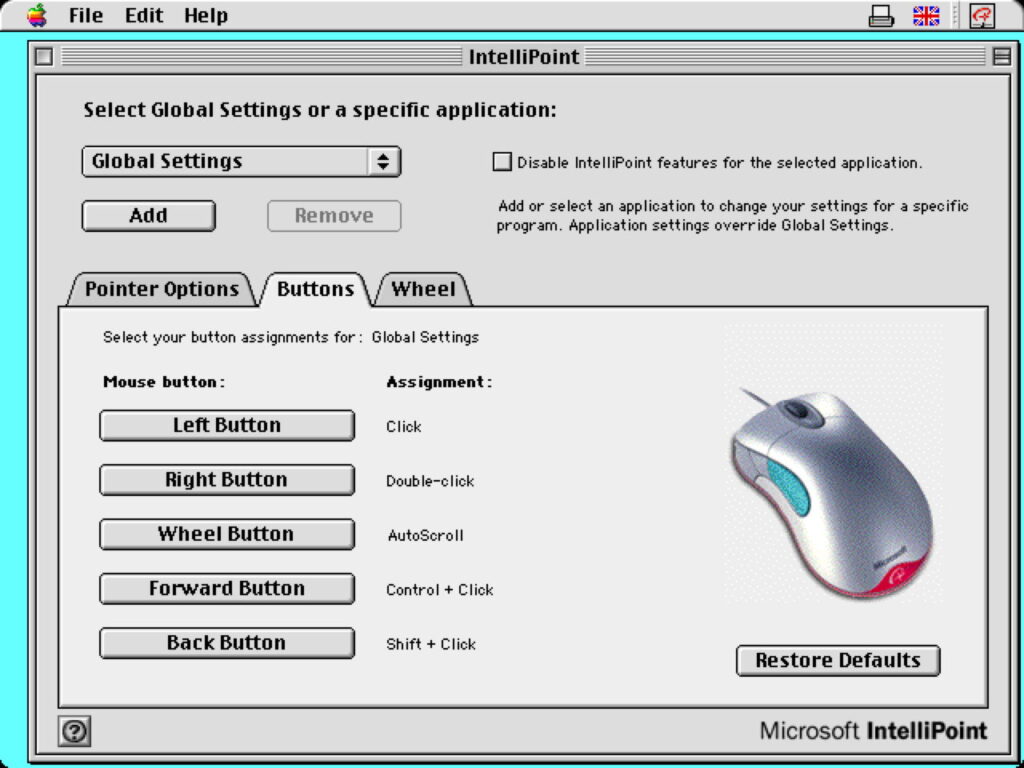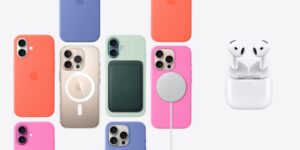A brief history of Mac ports – low speed

Like most computers, Apple’s Macs have had five main types of port to allow them to be connected to external devices: low speed intended commonly for keyboards and other input devices, high speed often for connection to external storage, display, network, and audio. This brief history concentrates on the first of those.
The original 128K Macintosh launched in 1984 came with a good range of ports, including two RS-422 serial ports and a DB-19 supporting external floppy disk drives. It had separate mouse and keyboard ports, DE-8 and RJ-11 respectively. In 1986, Apple’s IIGS brought the first implementation of a new type of port, Apple Desktop Bus or ADB, that was introduced to the Mac SE and II the following year, replacing the original mouse and keyboard ports.
ADB
At the time, ADB was unique to Apple’s computers, although it was later adopted by NeXT. This uses a 4-pin mini-DIN connector to hook up a daisy-chain of peripherals. The theoretical maximum speed of ADB is 125 Kb/s, although around 62 Kb/s was closer to that experienced in practice. Among these ADB devices came dongles, used to enforce software copy-protection. Devices on an ADB chain each have an address, fixed at $2 for all keyboards, and $3 for mice.
This is ADB Parser, analysing its traffic. Note both Keyboard and Ext. Keyboard share the original address of 02, and the Mouse has 03.
Perhaps the greatest shortcoming of ADB was that it wasn’t intended to be hot-swappable, and the Mac was supposed to be shut down before any changes were made to its connected ADB devices. Although many of us ignored that, it was at our peril. Occasionally, hot-swapping ADB devices fried a fuse that was soldered into the motherboard; although there was a workaround, for most that required a trip to the local authorised Apple dealer and a replacement motherboard, at considerable expense.
ADB and serial ports underwent the transition from Motorola 68K processors to the PowerPC in 1994, and it was another four years before their replacement came, in USB 1.
USB
The first iMac, released in 1998, was also the first Mac without an ADB port, and came with two USB ports for its mouse, keyboard and other peripherals. The first version of USB had only been introduced in 1996, and brought with it new USB-A connectors, although those were initially complicated by a different USB-B format on printers.
The move to USB opened up many new possibilities for external devices including storage, and hubs quickly became needed to support the profusion. Performance was also greatly improved over ADB, leaping from 62 Kb/s to 12 Mb/s at what was appropriately known as Full Speed. That improved again when USB 2.0 (released in 2000) appeared in the 15-inch iMac, iBook and PowerBook G4, and Power Mac G5 of 2003. These reached 480 Mb/s in what was justifiably called High Speed.
Apple System Profiler here shows five USB devices, each with its own driver, connected to a hub. These include a third-party mouse, and a USB-to-serial adaptor.
Third-party mice and other input devices thrived with USB, although driver support was variable. This is a Microsoft IntelliPoint mouse that was popular.
USB was far more complex than ADB, as seen here in ADB Prober. This is a selection of the data in a basic powered USB hub. One of the lasting mysteries was why some peripherals worked more reliably when connected to powered hubs, while others didn’t work at all unless connected direct to a port on the Mac.
USB continued to develop, and with it a profusion of different plug and socket formats. Several different Mini and Micro versions came to fill our drawers and boxes with their cables and adaptors. By the time of USB 3.0 and its 5 Gb/s SuperSpeed and USB-C format, we were all hoping for a reprieve and the return of simplicity. Those hopes were dashed with USB 3.1 in 2013, and its Gen 1 and Gen 2 with their confusion of different terms.
Bluetooth
The last transition for input devices was to do away with cables (almost) altogether, and in 2017 Apple dropped its last models of wired mice and keyboards. At first their wireless replacements required USB-A ports for their charging cables, and have most recently switched to USB-C. Bluetooth had its origins in 1999-2001 in headsets and mobile phones, and by the time our input devices had gone wireless they were achieving data rates upwards of 1 Mb/s over a short range. Few of us now rely on ports and cables to support our keyboards, mice and trackpads.



